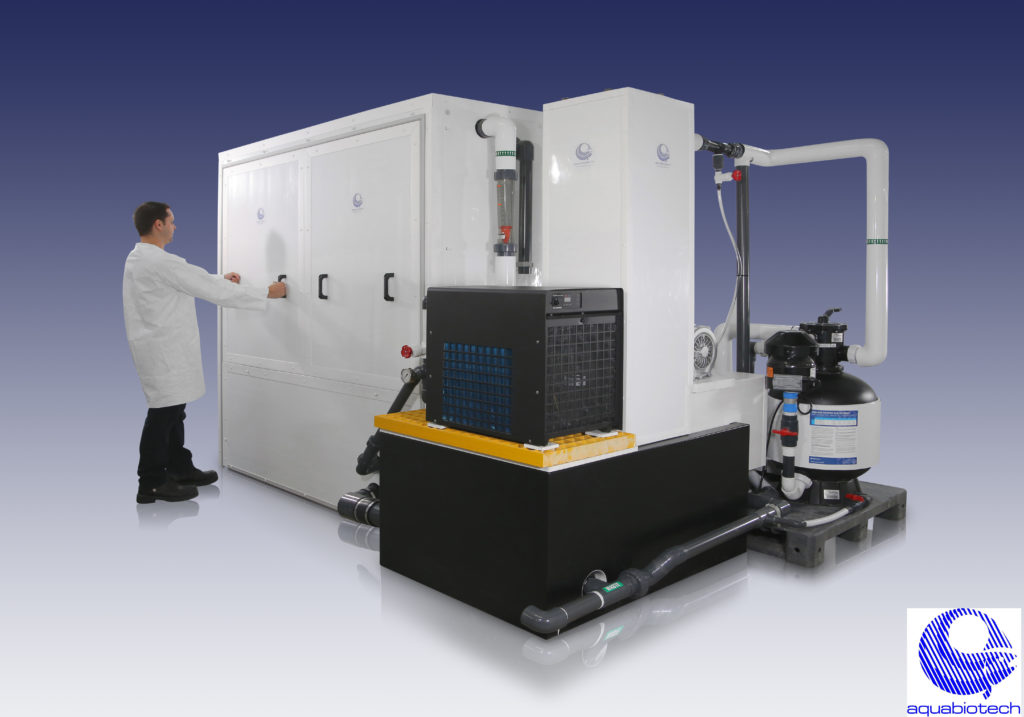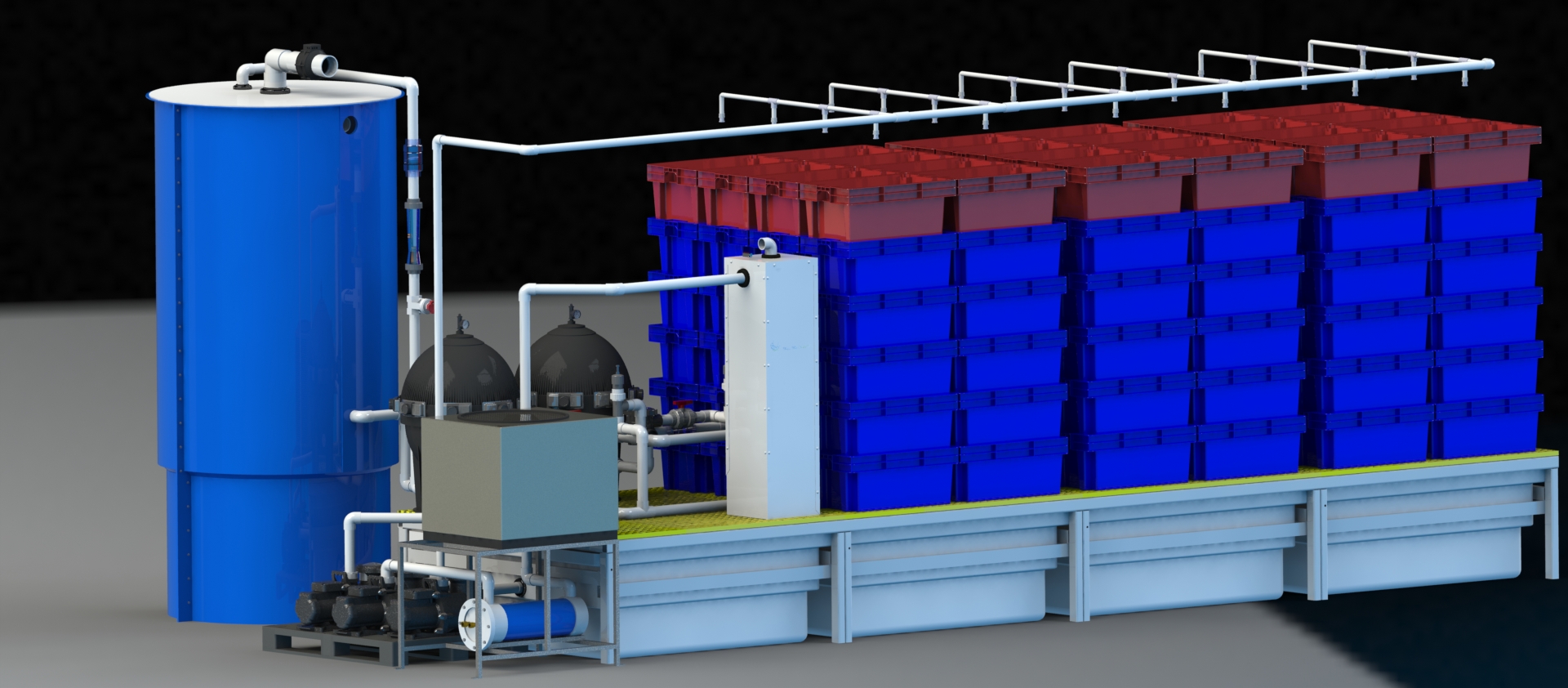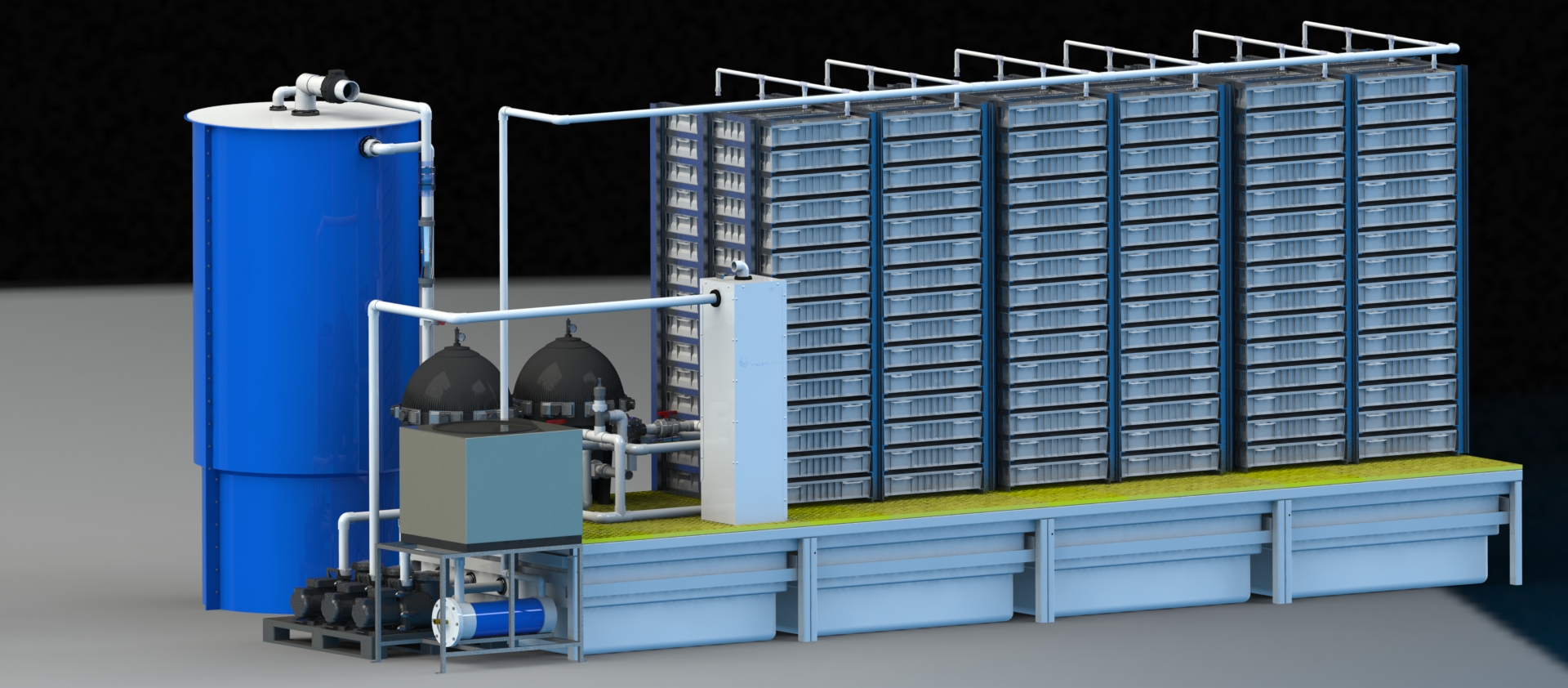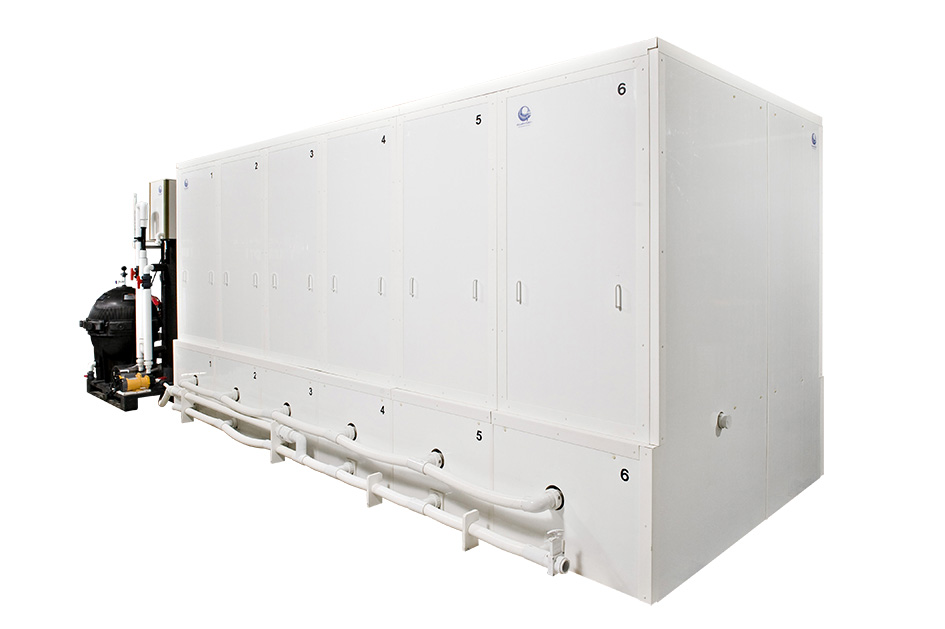Retail Sales Systems
SMALL-SCALE IN/OUT ECO-LOBSTER CONDO
Small-scale, self-contained water recycling system for the storage of lobsters
Polyvalent, the aquaBiota unit can hold various species of shellfish in a variety of holding receptacles, such as stacked trays, trays in a cabinet-like assembly, and stacked lobster totes. The included REBF module is designed to recycle close to 100% of the water flow (about 99.9%).
1000 lb unit (0.5 t)

If your goal is to store for only a few days (IN/OUT) in a small footprint, our small-scale Eco Lobster-Condo could be the solution.
This compact shower system is designed for IN/OUT operation. Sized for product turnover in the range of 525 to 1,050 kg/week (1,155 to 2,310 lb/week), it holds live shellfish in cold flowing water. Chilling and pumping costs are minimized through highly recycled water and a clever two-circuit design. It is an extremely reliable and flexible system.
If you are interested 
2,000 to 6,000 lb units


The water flow through the unit is divided into two pressurized-fed circuits. From the sump tank, the water flows into these two circuits. The first circuit directs the water through the chiller, the lobster totes, and biofilter, while the second directs the flow through the bed filter and the protein skimmer. The circuits then re-combine and flow together into the sump tank.
From sump #2, the water is pumped through the 20 microns bead filter. After the filter, the water is pumped through the protein skimmer. The effluent from the skimmer flows directly in an isolated section of sump #2.
From the isolated section of sump #2, the water is pumped through the chiller. A valve allows the chiller to be bypassed if necessary (for repairs or cleaning) or for regulating the flow through the chiller. From the chiller and the bypass, the water flows through the biofilter and lobster tote. The biofilter and lobster totes supply circuit overflowing each tote in a series. The effluent from the last tray flows directly into sump tank #1.
The trickling biofilter is, by design, an excellent aeration tower, efficient at both CO2 degassing and oxygenation. The high air-to-water ratio and large contact area within the biofilter maintain the CO2 level below 15 mg/L and the water well oxygenated. At high biomass loads, high-flow, low-pressure air from the blower (40 cfm @ 20”) is injected directly into the sump #1. However, we suggest operating it continuously for good CO2 degassing.
The Filtration module is equipped with a blower designed to operate with a Venturi in order to maintain high levels of dissolved oxygen regardless of fish densities, recirculation levels, or rearing temperature. Venturi Injector is a differential pressure injector with internal mixing vanes. When pressurized water enters the injector inlet, it is constricted toward the injection chamber and changes into a high-velocity jet stream. The increase in velocity through the injection chamber results in a decrease in absolute pressure, creating a vacuum at the suction port. The injectors’ internal mixing vanes create thousands of micro-bubbles, which greatly increases the surface area of air in contact with the liquid (several micro-bubbles have a greater surface area than one large bubble of the same volume).
The Filtration Module has been designed to keep the biofilm thin and active for optimal nitrification. A thin biofilm favours diffusion of CO2, ammonia, and oxygen. The high flow rate across the bioreactor allows it to be self-cleaning because of the constant shearing of excess microbial biomass. Starting and stopping the flow in a biofilter increases local agitation and favours the sloughing off of excess biofilm that may have accumulated on some parts of the biofilter. Sloughing off is normal and useful.
The cooling capacities of different chilling units have been tested on site. A minimum temperature of 3.0°C has been obtained (room temperature at 20°C or less).
Suggestion for different chillers.
|
Model |
HP |
Cooling Capacity (kW) |
Energy (kW) |
Minimum Flow (LPH) |
Maximum Flow (LPH) |
Temp. reached (°C) |
Operational Time (%)
|
| TK-6000 |
0.5 |
2.56 | 0.9 | 3,000 | 4,000 |
8 |
89 |
| TK-9000 |
1.0 |
3.84 | 1.5 | 3,000 | 4,000 |
5 |
66 |
| TK-5K |
2.0 |
5.80 | 2.0 | 3,000 | 5,000 |
3 |
42 |
The circulation pump feeds all totes and the filtration pump feeds the Bead filter and the Skimmer.
The pump starter disconnects the pump from the main circuit when an overload occurs. The current flow to the monitored motor is thus switched off directly. Two parameters influence the deflection of the bimetallic releases. There is for one the heat, which is generated in proportion to the current flow, and secondly, the influence of the ambient temperature. The influence of the ambient temperature is automatically compensated within a temperature range from -23°F to 104°F (-5°C to +40°C) by means of an additional current-free bimetallic release that continuously corrects the tripping range.
The Bead filter removes medium and small particles (20 microns) from the water by trapping them. It is located on a separate water line to prevent flow variations. These variations can affect lobsters following reduction of the quantity of oxygen available.

We’ve selected these totes for their convenient moulded-in overflows that keep the animals submerged as water flows swiftly from one tote to the next one below through calibrated holes and built-in stand pipes.





